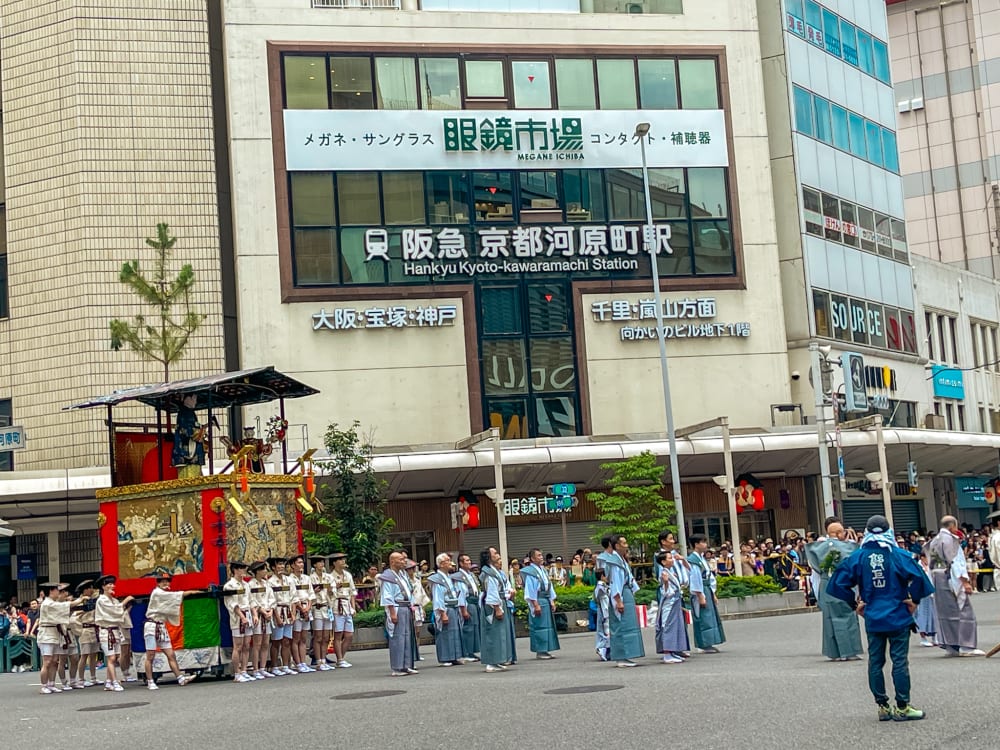
From Floats to Flavours: A Journey Through Kyoto’s Gion Matsuri
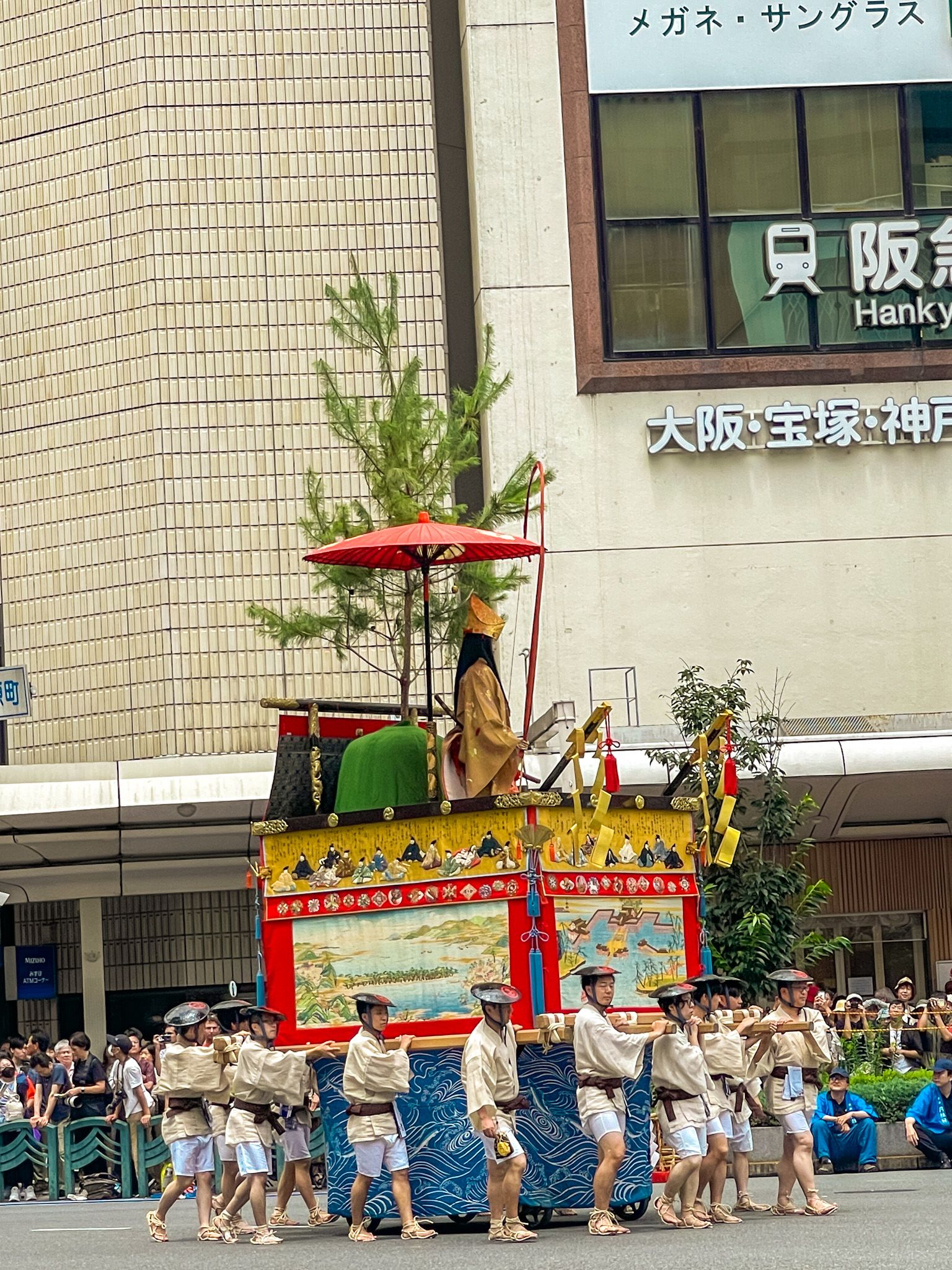
- Written byWinnie Ahupa
- Published date 16 October 2024

Winnie Ahupa, Post-Grad Ambassador and MA Global Collaborative Design Practice (Camberwell) student, spent the Summer months of 2024 in Japan as part of her course's collaboration with the Kyoto Institute of Technology. Here she reports back on her journey to Kyoto’s Gion Matsuri
This summer, I had the remarkable opportunity to attend the Gion Matsuri in Kyoto, one of Japan's most revered and enduring festivals.
Held annually in July, the Gion Matsuri is a month-long celebration that immerses visitors in a vibrant world of ancient traditions, exquisite street food, and intricate ceremonies. Rooted in spiritual history, the festival's core events unfold in central Kyoto, primarily around Yasaka Shrine, a Shinto shrine nestled in the famous Gion district from which the festival takes its name.
Renowned for its majestic floats and lively processions, the Yamaboko Junkō, the festival draws thousands of visitors from across Japan and the world, offering a rare glimpse into Kyoto’s rich cultural heritage.

Day 1: Discovering Kyoto's Hidden Byōbu
On the first night, my two friends and I set out to explore the festive streets during the Yoiyoiyoiyama evening. This night marked the start of the three consecutive nights leading to the first grand float procession.
The energy in Kyoto's downtown area was palpable, with streets transformed into pedestrian zones bustling with excited festivalgoers.
One of the most unique traditions I experienced was the Byōbu Matsuri, or Folding Screen Festival, where local families graciously opened their homes to the public, showcasing beautifully preserved family heirlooms.
It was an intimate experience, giving me a glimpse into Kyoto's private cultural treasures, from finely painted screens to ancient calligraphy and priceless antiques. These items, rarely displayed publicly, told stories of the city’s artistic and historical past, making it a night of unexpected discovery.
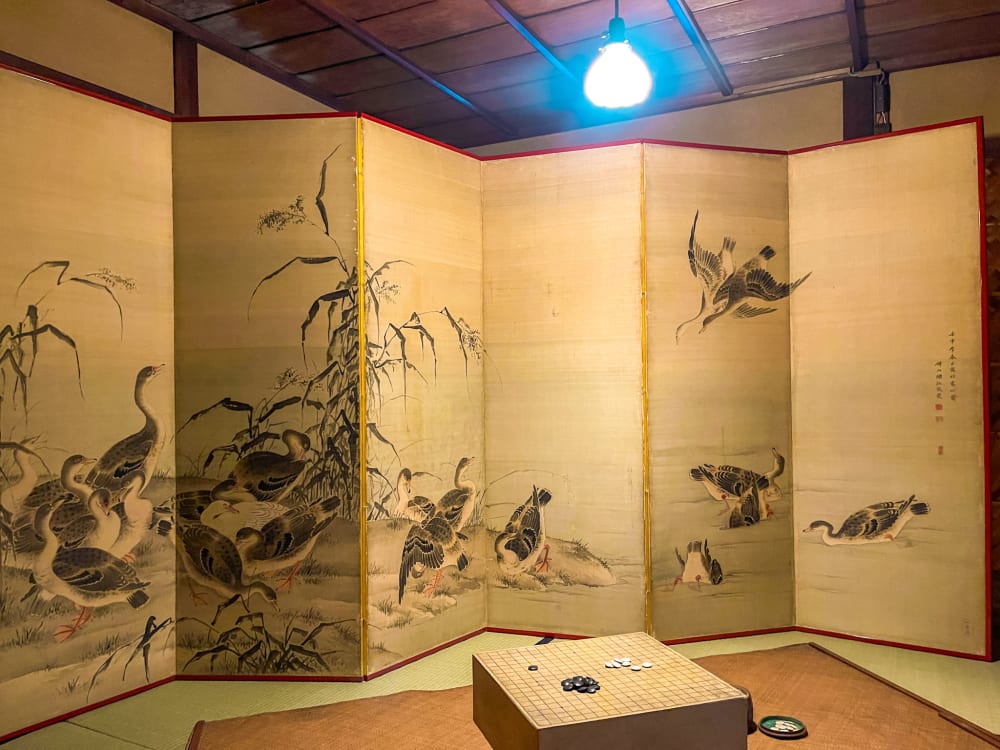
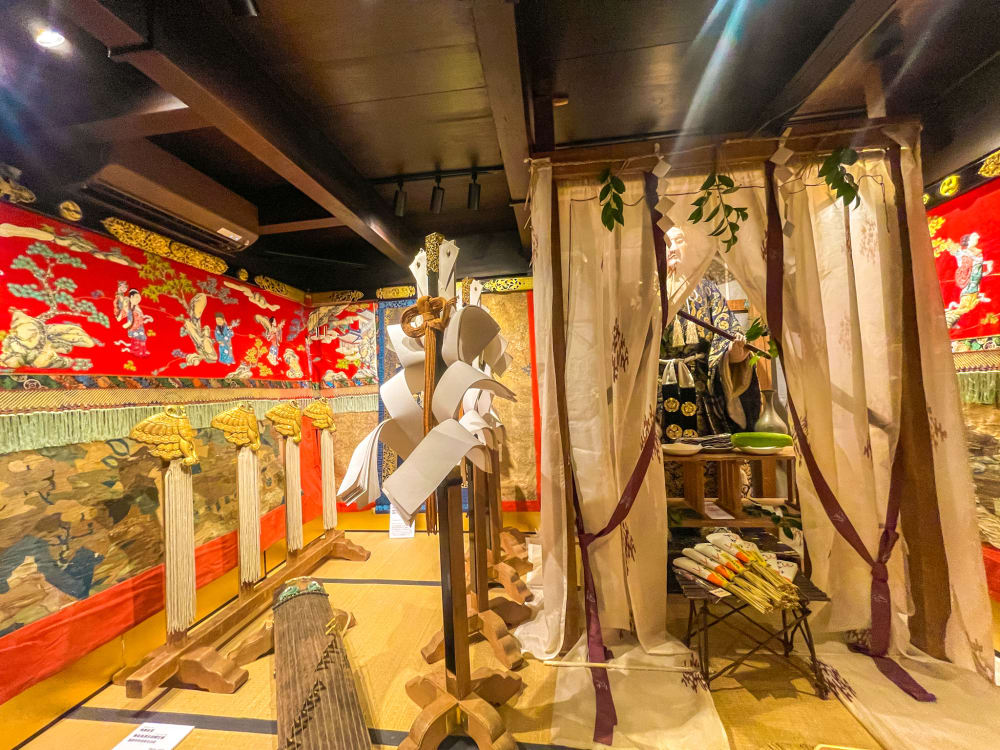
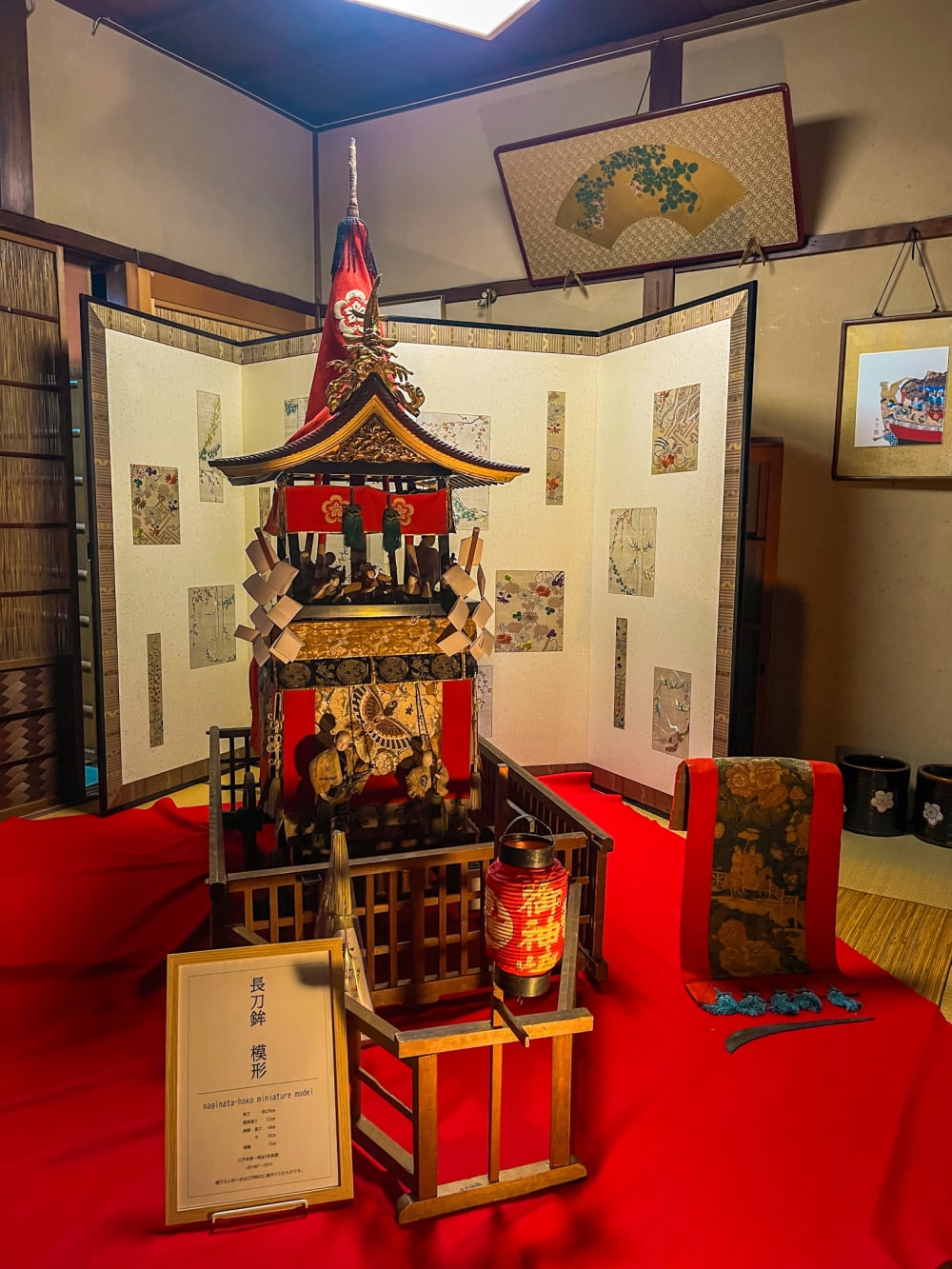
Day 2: A Feast for the Senses: Street Food and Festivities
The next evening, Yoiyoiyama, was even more lively and immersive. I ventured out with a group of classmates to indulge in the festival’s iconic street food and soak in the vibrant atmosphere.
The narrow streets illuminated by the warm glow of lanterns were lined with colourful food stalls offering everything from yakitori (grilled chicken skewers) to takoyaki (crispy octopus-filled balls), and the aroma of grilling meats and sweet treats filled the air. We couldn’t resist sampling taiyaki, delightful fish-shaped cakes filled with sweet red bean paste, and okonomiyaki, savoury pancakes packed with toppings.
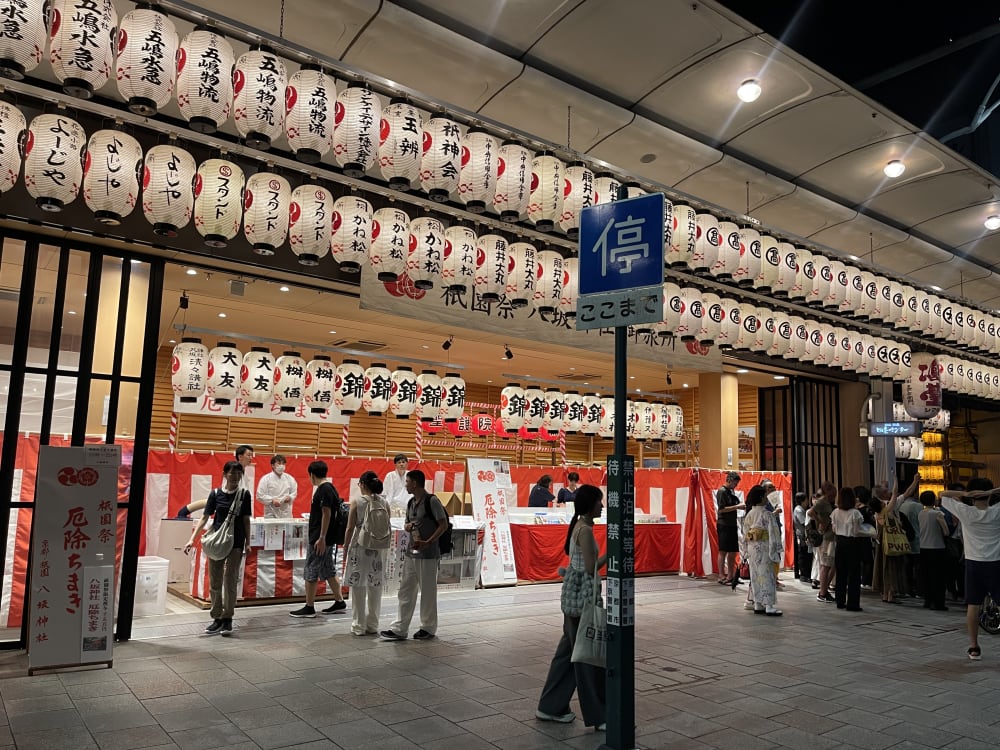
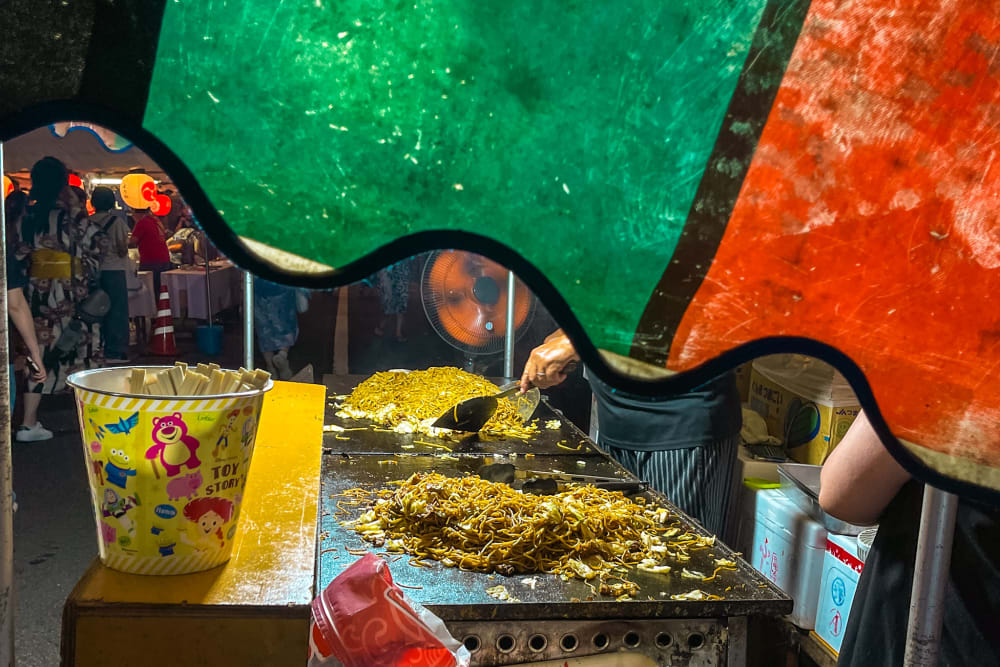
Amid the food stalls were traditional festival games like ring tosses and goldfish scooping, adding a sense of playful nostalgia to the festivities.
The streets were teeming with locals and tourists alike, many dressed in vibrant yukatas, lending an air of elegance to the celebratory atmosphere. Traditional music played by musicians on floats, the rhythmic sounds of flutes and drums echoing through the narrow streets, added a magical quality to the evening, making it feel like a living tapestry of Kyoto's vibrant traditions.

Day 3: The Grandeur of the Yamaboko Junkō
The highlight of the festival came on the third day, when I attended the Yamaboko Junkō procession. Choosing to experience this alone, I arrived early to secure a good vantage point to witness the procession of floats—an iconic part of Gion Matsuri.
The yamaboko, divided into towering hoko and smaller, hand-carried yama, were nothing short of breathtaking. Each float was a marvel of craftsmanship, meticulously adorned with ornate tapestries, traditional Nishijin weaving, and figures depicting Shinto deities and historical figures.

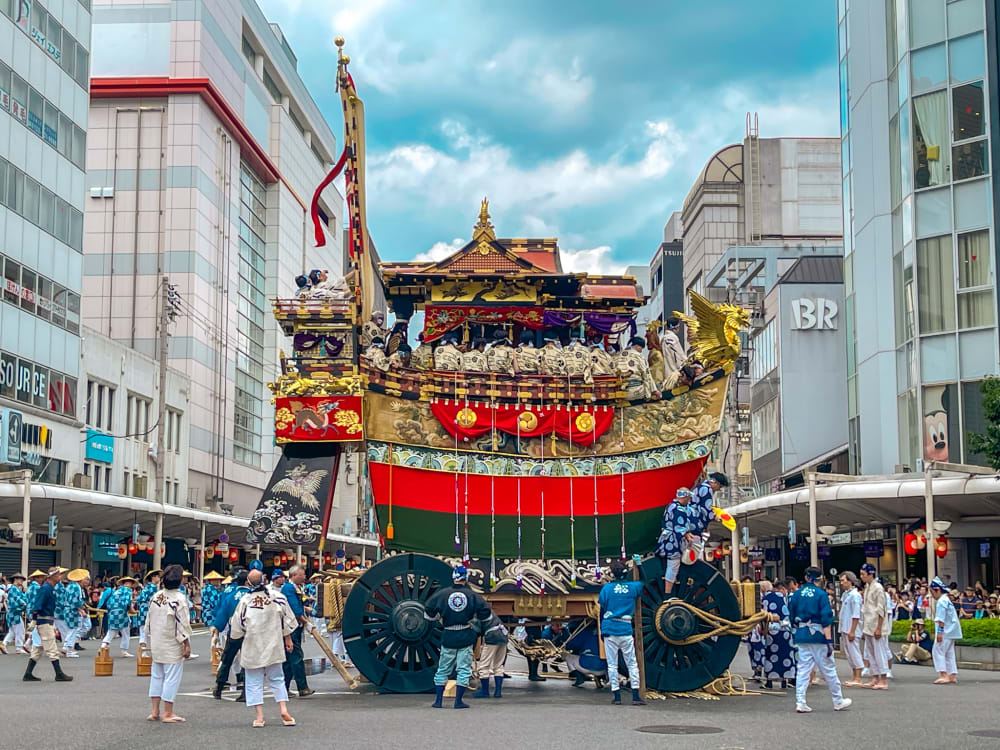
The sheer scale of the hoko, reaching up to 25 meters in height, was awe-inspiring. Watching the musicians atop the floats playing traditional instruments, such as taiko drums and bamboo flutes, I felt the deep resonance of centuries-old rituals. One of the most captivating moments was when the Naginata Hoko float, known for its elaborate decorations, made its appearance. At the heart of this float was a chigo, a sacred child dressed in regal robes and a golden phoenix crown.
As part of the procession’s purification ritual, the chigo, isolated from others weeks before the festival, performed the symbolic act of cutting the sacred shimenawa rope to initiate the parade, an event that sparked applause from the crowd. It was a moment charged with history and reverence.


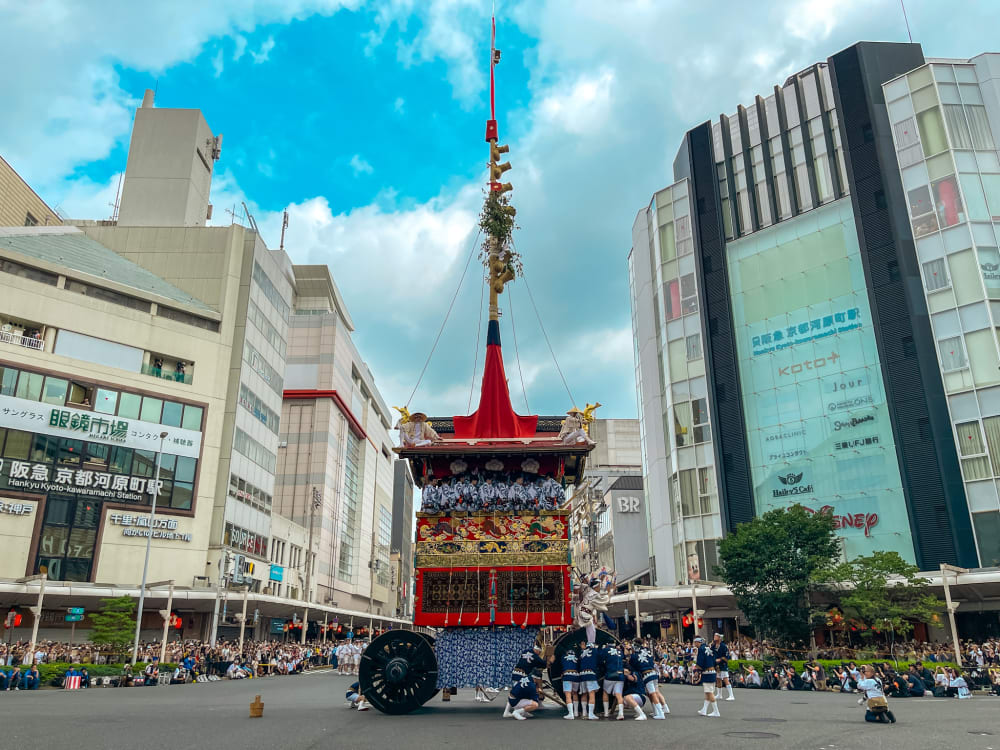
Reflecting on the Gion Matsuri Experience
Attending the Gion Matsuri provided me with more than just a festival experience; it was an enriching immersion into Kyoto’s spiritual and cultural landscape. The festival, which originated as a purification ritual during an epidemic in 869, has evolved into a deeply symbolic and joyful celebration that unites the city’s past with its present.
The Yamaboko Junkō floats, with their breathtaking craftsmanship, and the intimate glimpse into the lives of Kyoto’s residents during the Byōbu Matsuri, brought me closer to the traditions that define this city.
The inclusivity of the festival, from the bustling food stalls and open homes to the shared awe of the processions, created a profound sense of community. The Gion Matsuri is not simply a historical reenactment but a living, breathing tradition that continues to bring people together, transcending borders and backgrounds. It offered me a unique opportunity to connect with both locals and international visitors, experiencing the joy of cultural exchange while deepening my appreciation for Japan's living traditions.

This experience has left an indelible mark on me, not only as a visitor to Japan but as someone eager to continue learning about and participating in global cultures. I am deeply grateful for the opportunity to have been part of this extraordinary festival and would wholeheartedly recommend it to anyone seeking to understand Japan's cultural depth and vibrant traditions.
Related links
Post-Grad Stories
A thriving online magazine of our postgraduate student voices sharing thought-provoking experiences, practices, thoughts and articles about what matters to them.
Download the PDF Guide to writing articles for Post-Grad Stories
Want to write an article? Get in touch with the Post-Grad Community team PGCommunity@arts.ac.uk
UAL Post-Grad Community
Established in 2013, Post-Grad Community is an inclusive platform for all UAL postgraduate students to share work, find opportunities and connect with other creatives within the UAL and beyond. Find out more